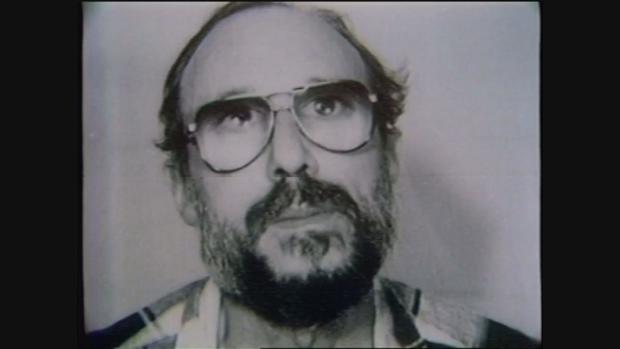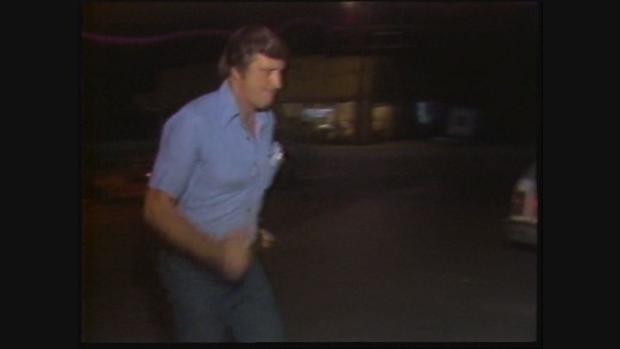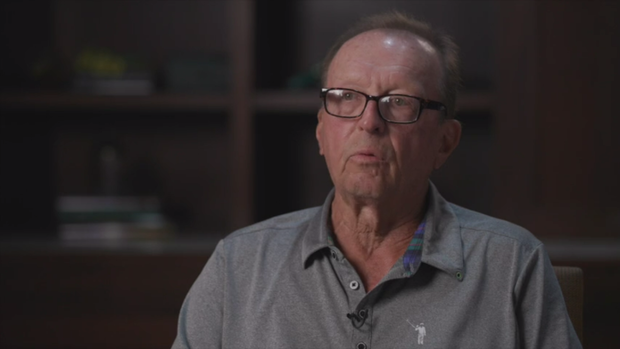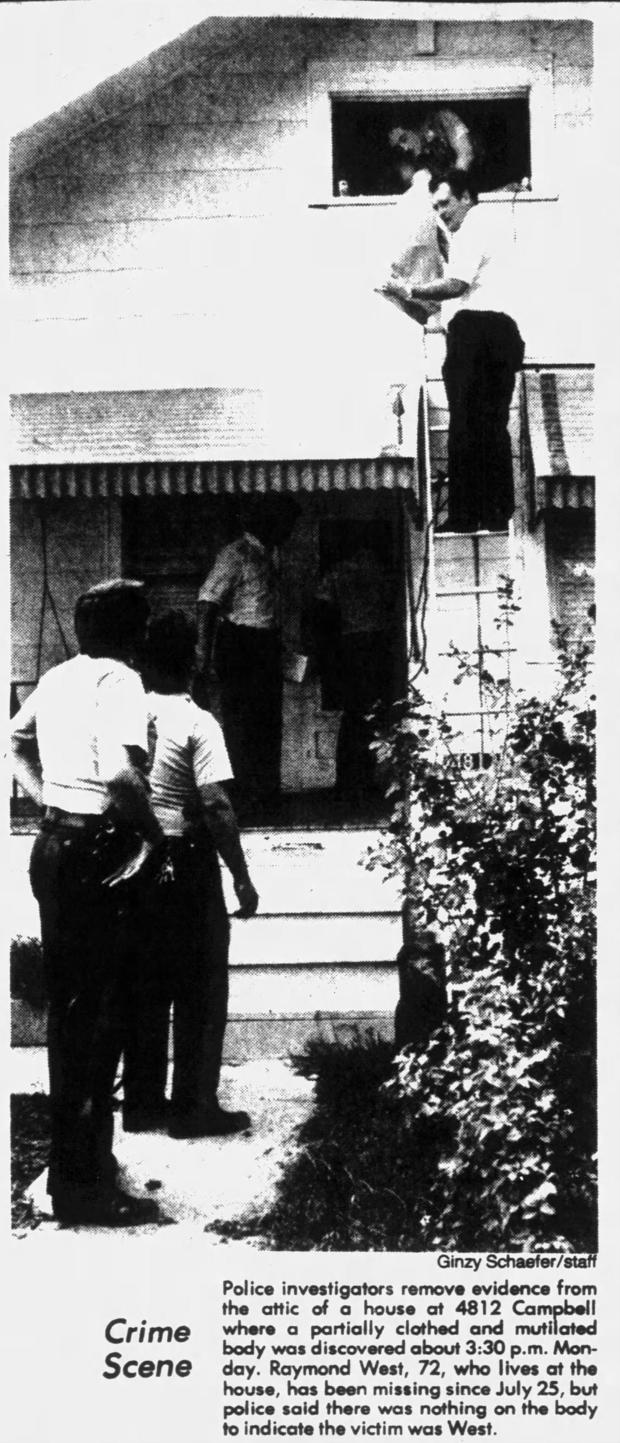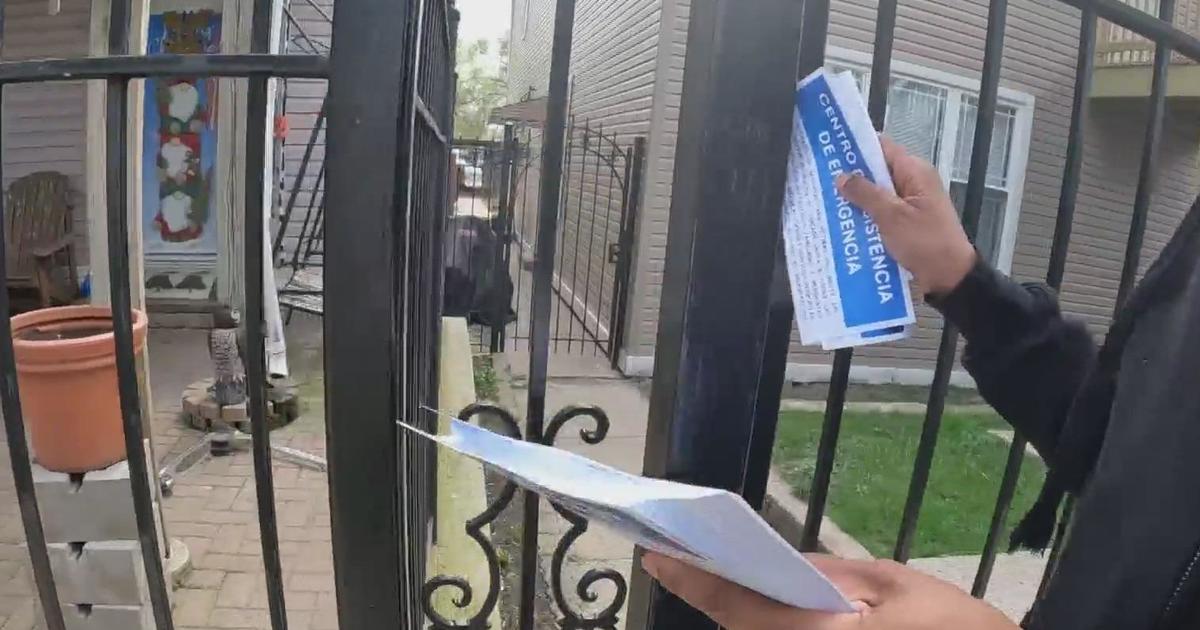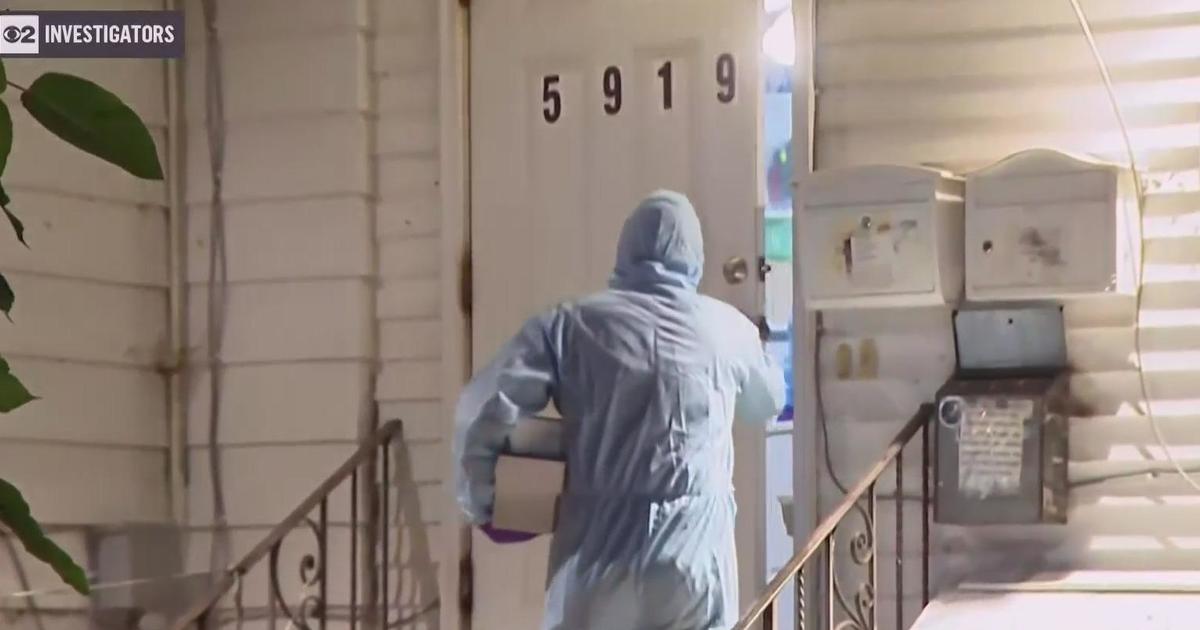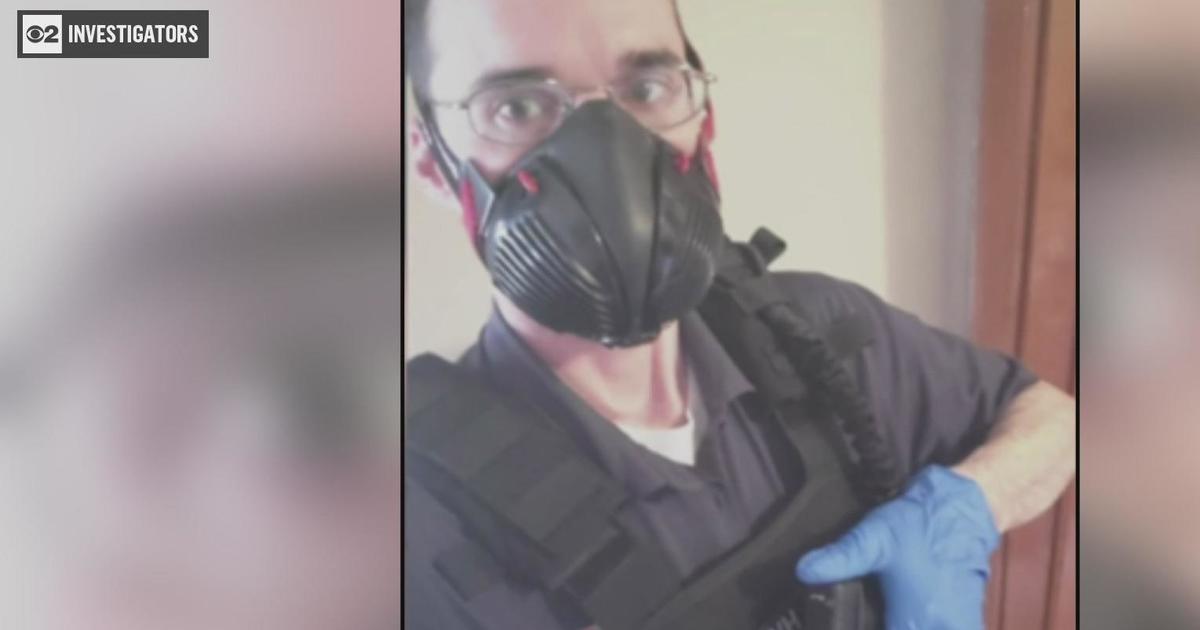Chicago Tylenol murders: Who did it? No one has ever been charged, but questions still surround James Lewis
COMING SOON, 'PAINKILLER': A multipart docuseries about the Tylenol Murders. Watch a preview and learn more about the case.
NOTE: On July 9, 2023, the prime suspect in the case, James Lewis, died.
CHICAGO (CBS) -- On this day 40 years ago, Chicago was in crisis.
The city was gripped by fear, as was the country. Seven otherwise healthy residents of Chicago and the surrounding suburbs had died or soon would after inadvertently taking cyanide-laced Tylenol.
Who did it? It's a question we still ask 40 years later.
MORE READING: Three members of the Janus family died in 1982, and the pain has been passed on to generations
Three key suspects appeared. One, James Lewis, spent 13 years in prison for a conviction related to the crime. But no one has ever been charged for the poisoning murders themselves.
Just last week, the CBS 2 Investigators learned Lewis was interviewed for hours outside his Boston home.
CBS 2 Investigator Brad Edwards traveled thousands of miles and traced Lewis's decades-long troubled track record – the person neighbors call the Tylenol Man.
Oct. 2, 1982: CBS 2's Phil Walters reports on the investigation into the Tylenol poisonings
The first tainted Tylenol victim – Mary Kellerman, 12, of Elk Grove Village – collapsed and died on Sept. 29, 1982. She had taken some Tylenol for a head cold.
Later that same day, postal worker Adam Janus, 27, of Arlington Heights, also died. He was followed soon afterward by his 25-year-old brother, Stanley, and sister-in-law, Theresa after they inadvertently took Tylenol from the same bottle that killed him.
New mother Mary Reiner, 27, of Winfield; Lombard phone center employee Mary McFarland, 31; and flight attendant Paula Jean Prince, 35, of the Old Town neighborhood also died or were found dead suddenly within the next few days.
Johnson & Johnson executive Wayne Nelson called it "a clear case of indiscriminate murder." The company ordered shelves cleared of Tylenol, Mayor Jane Byrne banned the sale of the drug in Chicago, and police in Chicago and the suburbs urged people to dispose of any Tylenol coming from a specific lot number.
Many dropped their Tylenol off at police stations. State and local public health departments tested thousands of bottles of the drug for cyanide – and Illinois scientists even invented a new method for doing so.
A 15-agency task force immediately formed to find the killer as panic ensued, including 26 FBI agents.
The poisoning murders themselves all happened within a period of a few days. But on Sept. 29, 1983 – a year to the day after the first death related to the poisonings, CBS 2's I.J. Hudson began his report with these words:
"It was the beginning of a nightmare for Chicago – a nightmare that is still not over for some."
Thirty-nine more years have passed since then, and that choice of phrase still rings true.
The questions of who and why screamed for answers – and they still call for answers. It has been 40 years since the fall of '82, and back then, a trio of men with potentially poisonous motives appeared.
One of those men was Roger Arnold, then 48 and a dock worker at the Jewel warehouse in Melrose Park. Police first learned about Arnold from a Lincoln Park bar owner, who told officers two customers said Arnold had purchased a large quantity of cyanide about six months before the poisonings and had been acting erratically.
During a search of Arnold's apartment on October 11, 1982, police found five guns, including a .30 caliber handgun, a rifle, and ammunition. They also found books on explosives and poisons, including a copy of "The Poor Man's James Bond," which describes how to make potassium cyanide. Laboratory vials, beakers, test tubes, and a white granulated powder were also observed.
Police said Arnold admitted to possessing cyanide in his home at one time, but none was uncovered during the search.
Seven months after the Tylenol murders, Arnold was charged with killing a man at a Chicago bar. Arnold believed the man was the one who first turned him in to the police during the Tylenol investigation. However, the victim was the wrong person. Arnold was sentenced to 30 years in prison.
But as a suspect in the Tylenol murders, Arnold was ruled out. He's dead now.
Authorities also expressed interest in Kevin Masterson of Lombard, then 35. Masterson reportedly had a longstanding grudge against the Jewel grocery store chain. Masterson's landlord claimed the resentment stemmed from an incident where Masterson claimed his wife was roughed up at a Jewel store while being held for shoplifting.
Masterson believed the incident somehow led to their divorce.
After a nationwide search, Masterson turned himself into the FBI in Los Angeles. Masterson was ultimately held on a warrant from DuPage County for possession of marijuana.
But with regard to the Tylenol murders, Masterson was also later ruled out. He's dead now too.
That leaves one more name.
On Oct. 8, 1982, the early editions of the Chicago Sun-Times and Tribune broke the story of a letter sent to the manufacturers of Tylenol, Johnson & Johnson. In the letter, further cyanide poisonings were threatened unless $1 million was placed in a postal box at Continental Bank in Chicago.
Authorities said the fingerprints of James Lewis, who at the time lived in Chicago and went by the alias "James Richardson," matched the fingerprints on the note sent to Johnson & Johnson.
A nationwide search for Lewis followed until he was finally arrested in New York City in December 1982.
Dec. 13, 1982: CBS 2's Phil Walters reports on Lewis' arrest in New York
James Lewis is alive.
Lewis was tried in the extortion case and was convicted by a jury in U.S. District Court in Chicago in October 1983.
During Lewis' sentencing hearing on June 14, 1984, U.S. Attorney Dan Webb called him "a walking crime wave." Lewis was sentenced to 10 years for the extortion attempt.
The day after his sentencing, Lewis sat down for an interview with CBS 2's Mike Parker at the Metropolitan Correctional Center. Lewis said he felt he was on trial for the Tylenol murders but said he did not commit the murders.
Parker interviewed Lewis a second time in 1989 at the Federal Correctional Facility in El Reno, Oklahoma. Lewis continued to deny any role in the murders then and has consistently done so all the time since.
"I could send a letter to the Roman senate and say, 'Give me one million gold pieces, and I will stop the killing of Caesar," Lewis told Parker. "But that doesn't mean that I killed Caesar."
Lewis said he never intended to collect the money demanded in the extortion letter. He said the letter was an attempt to draw attention to his wife's employer, Lakeside Travel after her paycheck bounced. He used the postage meter machine from the travel agency to send the extortion letter, and that's how the FBI linked him to the extortion attempt.
Lewis told Parker in 1984: "The letter itself is not illegal unless you have intent, and there was no way that I could have had any intent there. It was a closed bank account. It was a Continental Illinois Bank account. I had no more access to that bank account than one of you gentleman here."
So who is James Lewis? Some insight was available in our archives in the form of a 1982 report by CBS 2's Terry Anzur.
Lewis was born in Memphis, Tennessee, and grew up in Carl Junction, Missouri. He was the adopted son of a churchgoing farm couple – Charlotte and Floyd William Lewis – who gave him his name.
Lewis was described as troubled – with a history of family violence, Anzur reported. After attacking his adoptive mother with an axe, he was voluntarily committed to a state mental institution in 1966.
CBS 2's Edwards went to Carl Junction to ask about Lewis. He was informed that the Lewises had once lived in a house that is now gone, its footprint now taken up by shrubbery and weeds.
In the 1982 file video, CBS 2's Anzur reported Lewis left the hospital in 1968 for Kansas City, Missouri – where he met his bride, LeAnn. They had one daughter with developmental disabilities who died at 5.
Lewis was also the suspect in a bizarre 1978 murder case in Kansas City that was dismissed on a technicality. He was accused of murdering and dismembering an older man named Raymond West in connection with a fraud scheme.
Oct. 15, 1982: CBS 2's Terry Anzur reports on the Raymond West case
Lewis had been working as a tax accountant in Kansas City, Anzur reported at the time. West had been one of his clients.
West's body had been found in the attic of his home. His legs had been cut off, and the rest of his body had been stuffed in a plastic bag and was so badly decomposed that the coroner could not determine the cause of his death.
David Barton was a Kansas City, Missouri, police detective assigned to the homicide unit in 1978. James Bell was an assistant prosecutor in Jackson County, Missouri. Edwards spoke with both men.
Barton became involved when West's body was found in the attic.
"A game hoist was used to haul the body up into the attic," he said.
Bell told Edwards he did not remember the hoist, but he does remember the ropes and knots – specifically the knots used to tie up West's body. He said the same knots were found in the trunk of Lewis' car.
"I know my way around knots. I was in the Navy, and I was a sailor," Bell said. "I could tell that this was not a run-of-the-mill knot. This is a knot that required a little bit of know-how on how to tie knots."
Bell said he went to the crime lab while preparing for the trial of the West case, and he opened up the sealed plastic bags that contained the slip knots.
Bell said he remembers the smell vividly to this day.
"I opened up those bags of rope that included the slip knots that tied Raymond West's legs and torso up, and the stench that I got on my fingers stayed for days," Bell said. "You couldn't wash it off. I was just so godawful that it nearly knocked me over."
Lewis was indicted in the case, but it never went to trial – the charges were dropped. The reason was that a judge ruled police had failed to read Lewis his Miranda rights, so the evidence was obtained illegally.
"Just another one of the fuck-ups that plagued this case," Bell said.
The same could be said over and over in Mr. Lewis' life. Despite his stint in the federal pen for extortion, Lewis was connected to many other crimes. But he always slithered free.
Lewis settled in greater Boston. In 2004, he was charged with raping and kidnapping a woman in Cambridge, Massachusetts. The case was dismissed the day before the trial when the victim suddenly refused to testify.
In 2009, FBI agents searched Lewis' apartment in Cambridge, Massachusetts, removing boxes of evidence.
And earlier this year, Edwards traveled to Boston to find Lewis.
Edwards first approached a couple of women outside a Cambridge apartment building and asked if they recognized Lewis. They did not.
Edwards also just went ahead and pressed a buzzer marked with the name "Lewis" at the building – and indeed, a man came to the door. Edwards knew it was Lewis – and Bell corroborated it upon seeing the video.
Edwards later showed the encounter to others familiar with the case – including John "Bulldog" Drummond, the retired CBS 2 reporter who was among the team covering the case from the beginning.
Drummond said it was a shock that Lewis came down to meet Edwards.
"I'm very surprised that he did that," Drummond said. "Very surprised."
We also showed Edwards' entire exchange with Lewis to Arlington Heights Police Sgt. Joe Murphy, who is the default head of a task force investigating the murders.
Meanwhile, Bell said he hopes Lewis "tries it again."
"Tries to get away with murder again. Maybe this time, we can catch him," Bell said, "and I'll have this criminal case in my file drawer until the day I die."
Meanwhile, what is the latest with the 1978 murder in Kansas City, and what did Lewis say to Edwards?
It was a peculiar exchange.
More will come in our docuseries, "PainKiller: Tylenol Murders 40 Years Unsolved," airing this fall.
